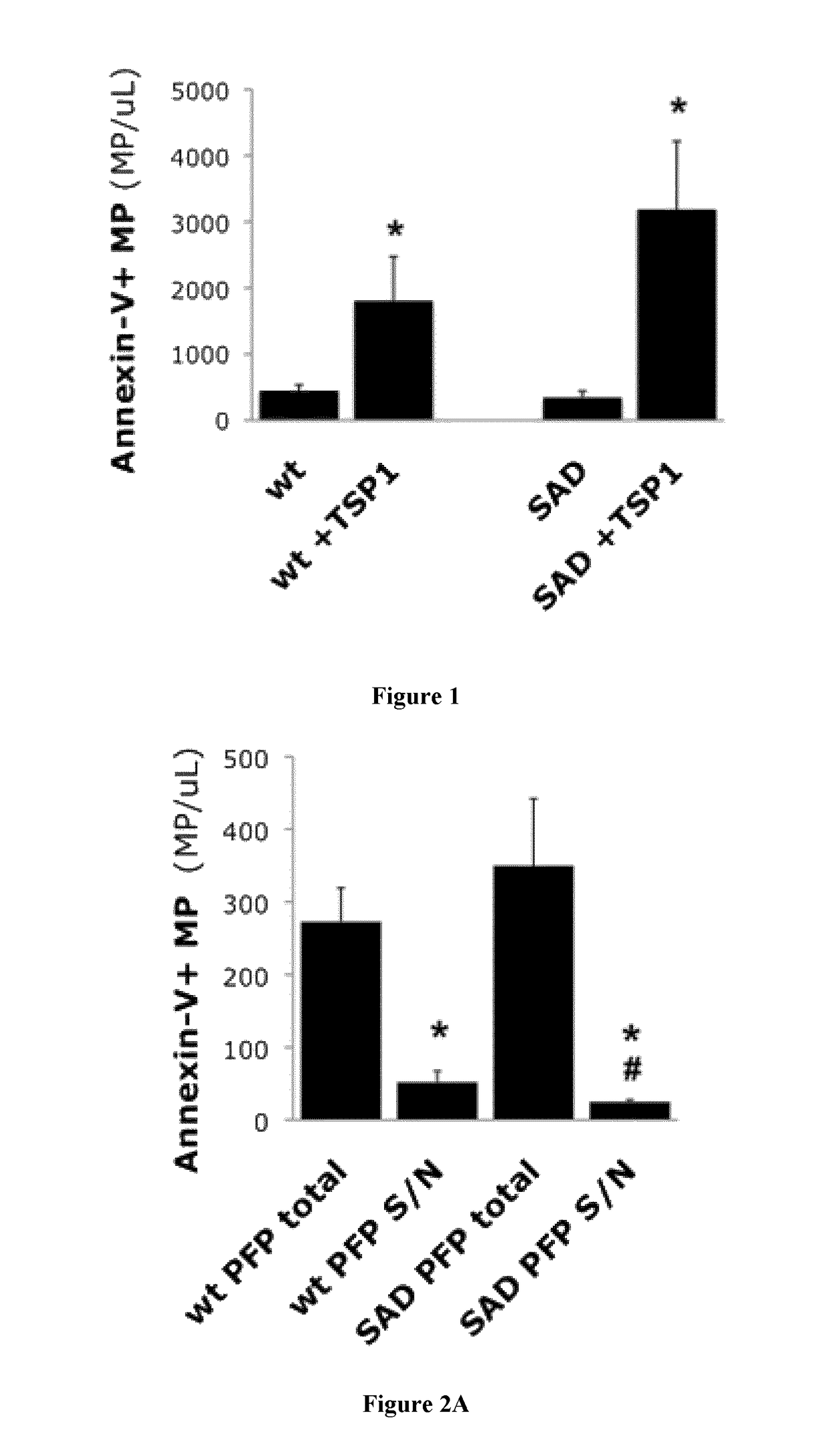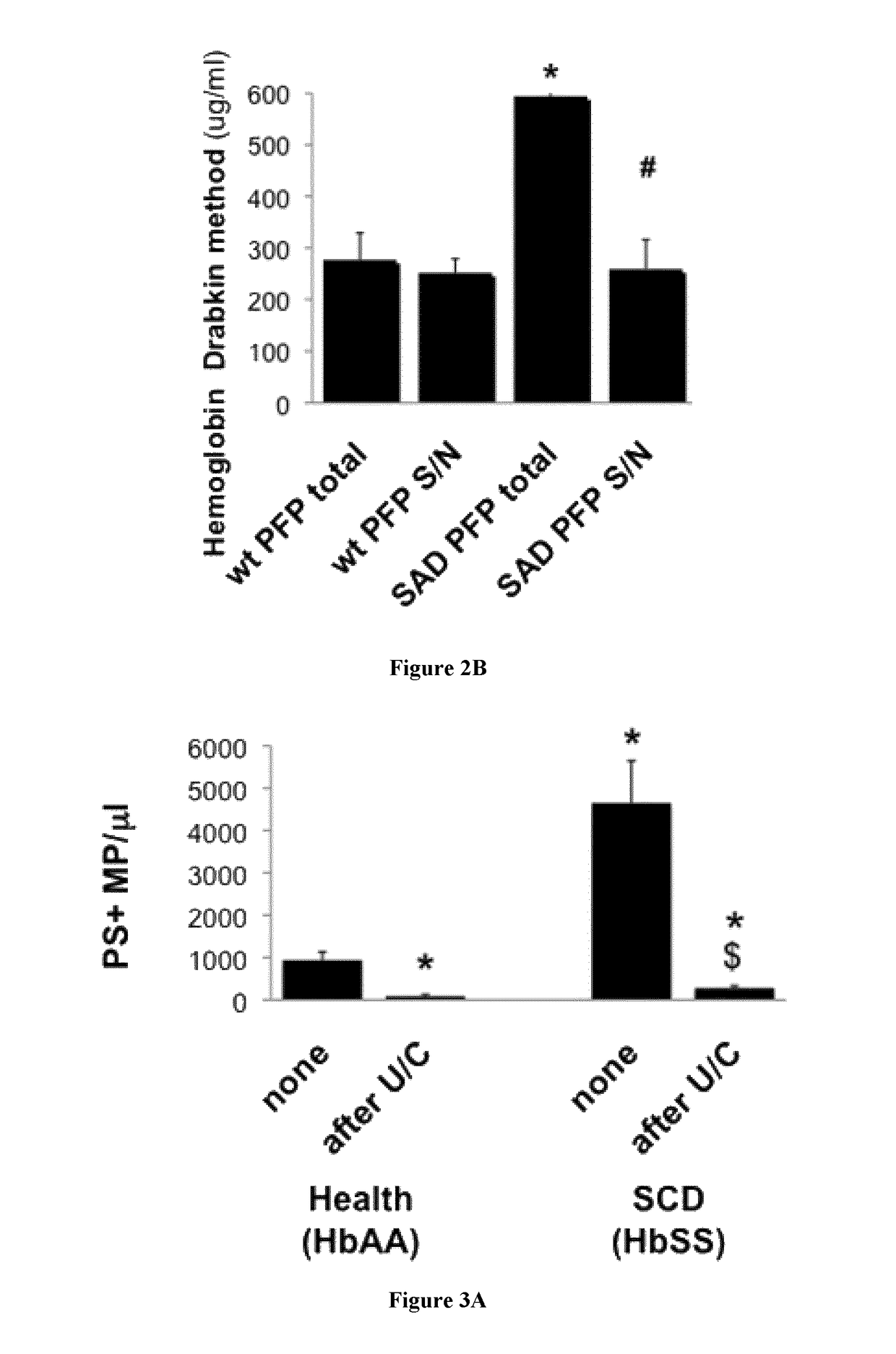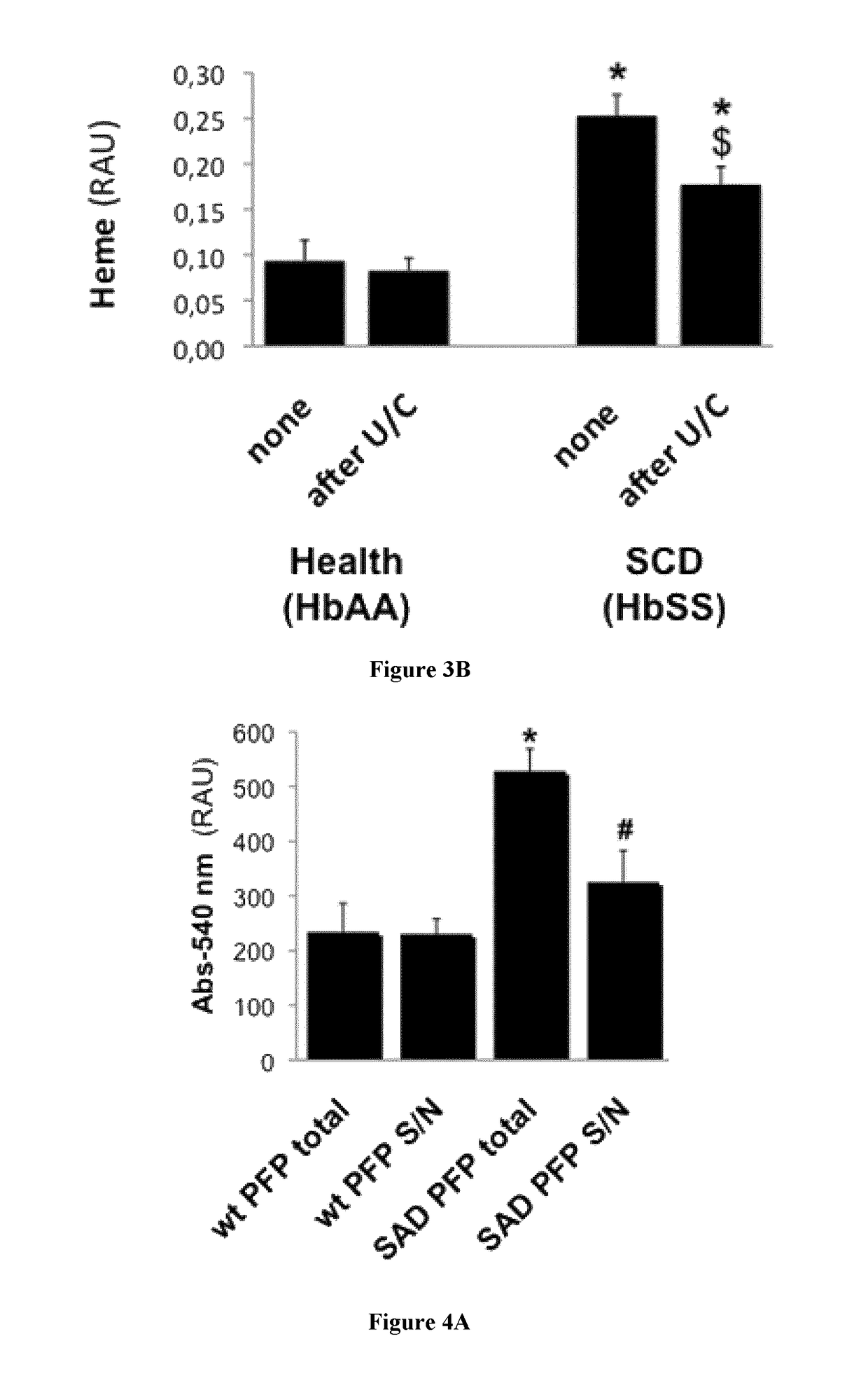Methods for treating vaso-occlusive crisis using non-modified annexin V
a vaso-occlusive crisis and non-modified technology, applied in the field of vaso-occlusive crisis prevention and treatment, can solve the problems of virtually no specific drugs to treat, only effective in about 40% of hydroxy-urea, and worsening challenges for health and social services, and achieve the effect of preventing a vaso-occlusive crisis
- Summary
- Abstract
- Description
- Claims
- Application Information
AI Technical Summary
Benefits of technology
Problems solved by technology
Method used
Image
Examples
example 1
[0134]Animals
[0135]We used 10-14 week old males of C57b16J background unless otherwise indicated. We bred male SAD transgenic mice obtained from Dr Beuzard (9) and carrying a human hemoglobin β chain transgene with 3 mutations (βS β6Val, βS-Antilles β23Ile and D-Punjab β121Glu). Genotype was confirmed through electrophoretic characterization of blood hemoglobins at the hematology department of the Höpital Européen George Pompidou in Paris. Wild type (wt) animals were control littermates from the above colonies, or procured through Charles River, France. All procedures for study animal care and euthanasia followed the European Community standards (authorization #00577). Protocols were validated by the local Inserm ethics committee.
[0136]Reagents
[0137]Human recombinant TSP1 was produced by EMP-Genetech (Germany). Synthetic peptides (17) 4N1-1 (RFYVVMWK) (SEQ ID NO:1) and 4N1-2 (RFYVVM) (SEQ ID NO:2) were obtained from Bachem, 4NGG (RFYGGMWK) (SEQ ID NO:3) is manufactured by Genecust (...
PUM
| Property | Measurement | Unit |
|---|---|---|
| pore size | aaaaa | aaaaa |
| temperature | aaaaa | aaaaa |
| diameter | aaaaa | aaaaa |
Abstract
Description
Claims
Application Information
 Login to View More
Login to View More - R&D
- Intellectual Property
- Life Sciences
- Materials
- Tech Scout
- Unparalleled Data Quality
- Higher Quality Content
- 60% Fewer Hallucinations
Browse by: Latest US Patents, China's latest patents, Technical Efficacy Thesaurus, Application Domain, Technology Topic, Popular Technical Reports.
© 2025 PatSnap. All rights reserved.Legal|Privacy policy|Modern Slavery Act Transparency Statement|Sitemap|About US| Contact US: help@patsnap.com



